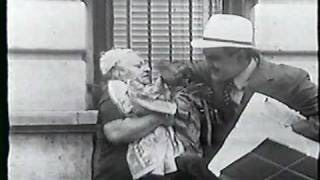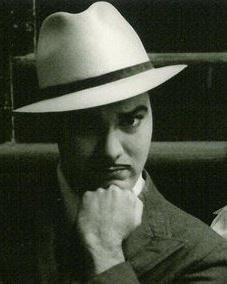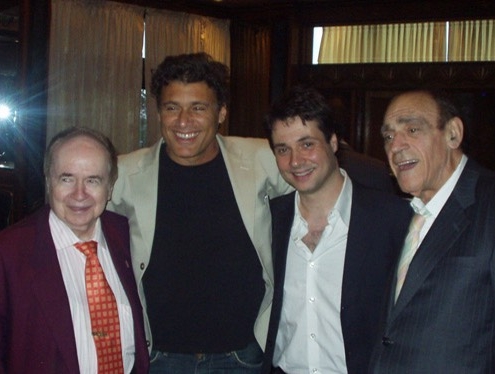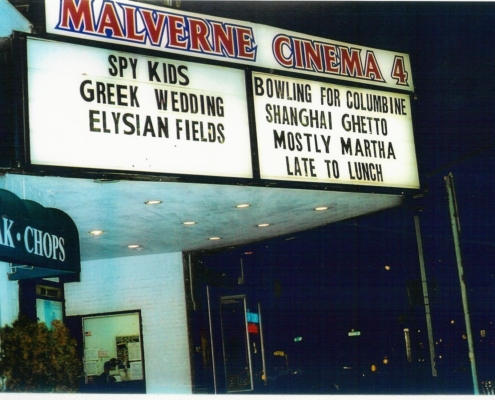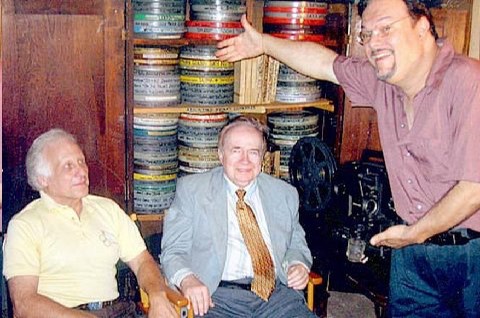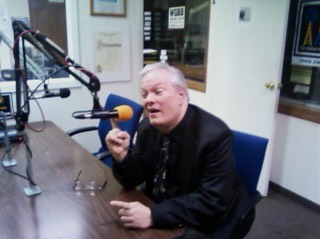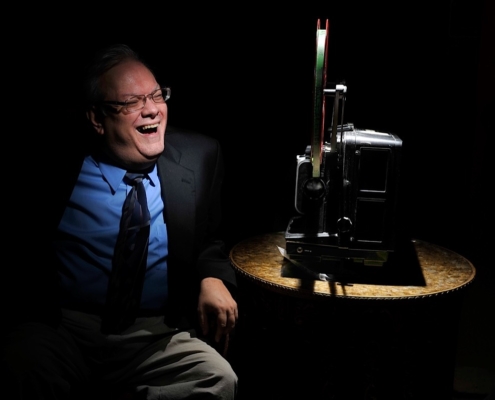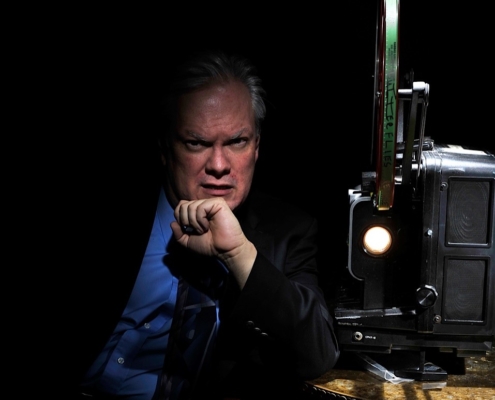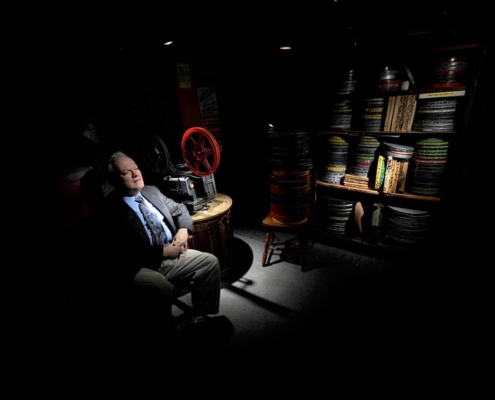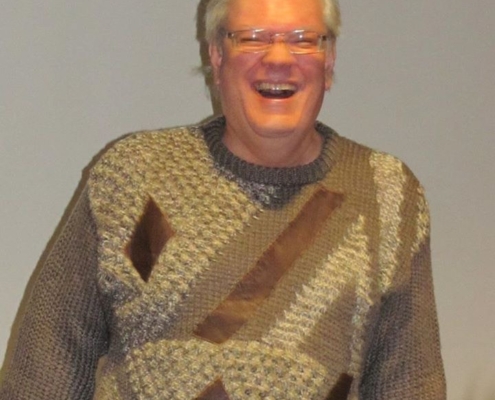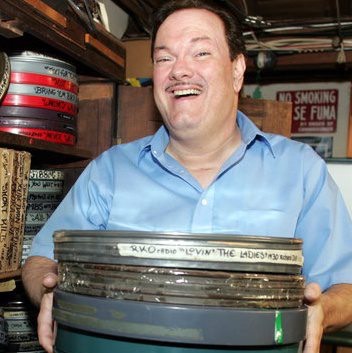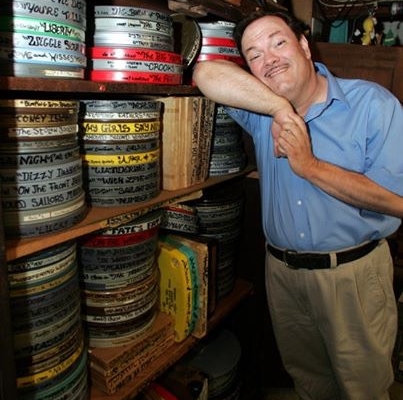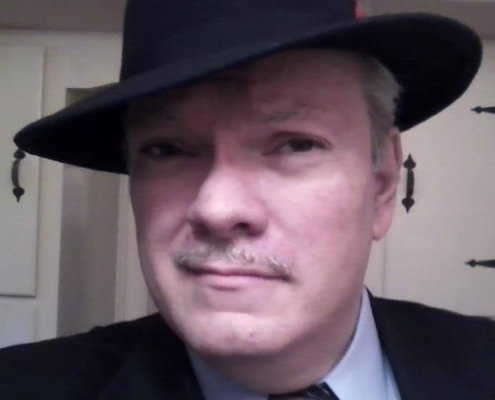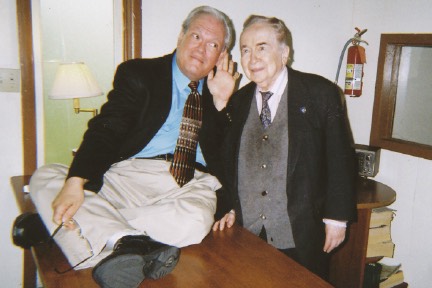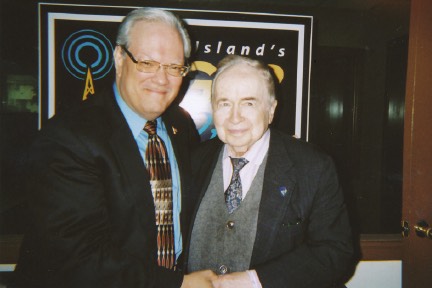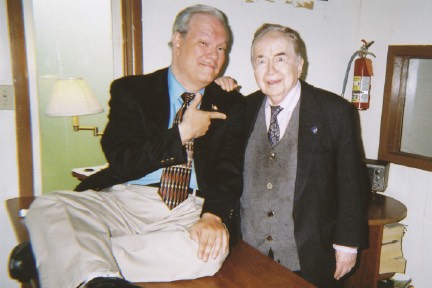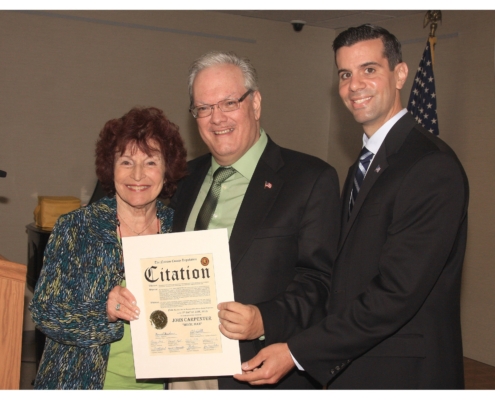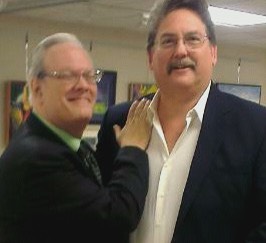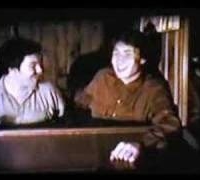Late to Lunch – short
Release Date: 2002
Director: John Carpenter
Writer: John Carpenter
Producer: John Carpenter
Locations of L.I. Shoots:
Flower shop on Northern Blvd.
Of Interest:
LATE TO LUNCH 16mm 37:33 Minutes Thursday, July 18, 2002 4:30 PM 16mm Block Barjon Comedy Endeavors silent film, Late to Lunch, is directed, written by, and produced by Massapequa Park’s John Carpenter. Late to Lunch, makes it’s world premiere at the Long Island International Film Expo. With the assistance of the Vitaphone Project and Ron Hutchinson, Mr. Carpenter has scored this film comedy with actual disk used as atmospheric music by film projectionists during the transitional days of silent to sound motion pictures. Shot in 1987.
Photos
Carpenter directing & setting up a 2 shots for late to lunch
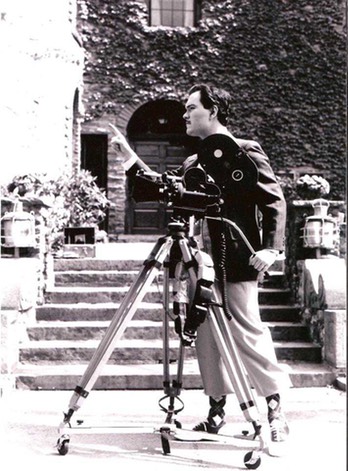

John K. Carpenter – Late to Lunch
By Laura Wagner
When you hear the name John Carpenter, you automatically think of that dubious contemporary director (The Fog, Escape from New York, The Thing, Christine, Big Trouble in Little China) whose big success stems from his only good movie, Halloween (1978). But, for classic movie fans, that name also belongs to a man who has parlayed his love of film – particularly silent comedy – and 16mm collecting into directing and starring in a delightful homage, Late to Lunch (2002), which is now available through Alpha DVD (www.oldies.com).
John K. Carpenter is an Indie filmmaker based in New York. He’s has had two films theatrically shown which he has produced, directed, written and starred. He is also a noted film historian, having hosted since 2004 a classic film program and lecture series featuring his own personal collection of 16mm film prints (presently totaling over 3,000) that he has preserved and restored.
Late to Lunch is Carpenter’s attempt to recreate the days of silent comedy, shot as if it were filmed in 1927. The reasons for Carpenter’s entrance into filmmaking are simple. “I have long felt strongly that this original, pure type of comedy should be revived,” he says. “Entertainment today seems caught in the mix-up of all the noise, violence, nudity, language and rude behavior that unfortunately stands as comedy these days.” Instead of “simply getting on a soap box and finding a lonesome corner to preach my beliefs in,” he decided to make his own movies in junior high. His father was a photographer and he got John his first Super 8 camera. “I began replicating the style and frenetic pace and gags of the Keystones of the teens, complete with plots, premises, and gags. My house was packed every time I completed one; I was testing out footage to an audience.
“I made a feature part-talkie in junior high, another in high school, and premiered it in college, but it was after I graduated that I raised the budget for my first negative 16mm 45-minute 4-reeler recreation of the era I loved so much, Late to Lunch. From there it’s been shown theatrically and in festivals in highly-competitive New York.”
Late to Lunch is “not a parody of the genre,” he stresses, “but a loving and accurate recreation of it. I feel like I show my audiences how to laugh again and teach the youth of today that even a black-and-white film is worth seeing.”
Joe Franklin picked up on John’s inspiring work and began publicizing it for free on his WOR radio broadcasts. Joe, as everyone, is amazed that John has made a special name for himself by stepping backwards and making a black-and-white silent in this age of digital and technical effects and wizardry. Late to Lunch, in fact, resembles a real silent image: “I have added scratches, specks of dirt and an abrupt splice here and there to make it seem as if my print, too, survived decomposition and decades of wear and tear at the hands of many local projectionists.”
John K. Carpenter is a true movie fan. “I learned my craft not from a school but by studying the films themselves. Charley Chase’s Limousine Love and Keaton’s Seven Chances are my biggest inspirations and a motivating force in their plot and gag construction. Having begun collecting silent comedies from the teens, twenties and thirties via sources such as Blackhawk, Official, Regent, Atlas and even Castle while still a pre-teen, I hadn’t discovered what was today to be my calling until my father took me to see, as part of a double feature, Robert Youngson’s Four Clowns. Upon seeing Charley Chase in Limousine Love, I knew then and there that I was put on this earth to make film comedy.
“Charley Chase to me was the most inventive, innovative and bravest of the silent stars. Not in terms with Keaton or Lloyd’s thrills and stunts, but that he was the first to perfect the reality and believability of a clown. He showed how a real, handsome and skirt-chasing man of his era could not only get into troubles but then extricate himself from them using those same good looks and intelligence that usually would get him into them! No odd make-ups or costumes; just a regular man of his time! A huge thrill was getting to know his last living daughter, June Chase Hargis, and having her write me a letter I cherish, thanking me for dedicating the film to ‘Dad’ and for keeping his memory alive.”
No silent film was ever really silent. To keep with its authenticity, Late to Lunch boasts a musical score not heard in association with a film for 80 years. With the assistance of Ron Hutchinson of The Vitaphone Project, Carpenter synchronized his film with actual late 1929 Victor-Pict-Ur-Music mood music discs that were actually handled and used by film projectionists during the transitional days of silent-to-sound pictures so that a “Talkie” flavor has been added.
Late to Lunch was accepted as part of The Long Island Independent Film Expo in 2002; its success and notoriety was so tremendous that it was booked to be re-released on its own outside of the festival and Carpenter had it accompanied by an actual Charley Chase two-reel classic from the era that it emulated so well.
On November 25, 2009, Alpha Home Entertainment released Late to Lunch as part of a DVD package that included rare shorts actually made by and starring Charley Chase, Charlie Chaplin, Paul Parrott and John Bunny. Go to www.oldies.com for more information, and let’s support John K. Carpenter’s efforts to keep silent comedy alive.
Please check out John Carpenter’s documentary Smelling Like a Rose on how he survived after being hit by a car.
John Carpenter is an inspiration to all of us. NEVER GIVE UP!!!
This is Your Life Mr. John Carpenter!
John at 8 reading a Home Movie Catalog

My ACTUAL name Truly is John K. Carpenter (you now realize why the K. was imperative to include!) I am a Indie film maker in New York having two films that I have already produced, directed, written & starred in theatrically shown (youtube.com/smellinglikearose) will show all of you a sample of my out put thus far! I am also a much known film historian muchly due to MY TREMENDOUS LOVE OF THE FILMS OF THE 20s & 30s. Since 2004 I have hosted a Classic Film Program and Lecture series featuring 16mm film prints (presently totaling over 3,000) that I have collected, preserved & restored. The 20s & 30s Comedian CHARLEY CHASE has been my childhood inspiration to go into film production and in a few months LATE TO LUNCH my 2002 Indie theatrical film will be marketed on DVD by Alpha Home Entertainment for worldwide distribution! It is a totally authentic and accurate recreation of a typical silent comedy of the late 20s as if it was actually shot at that time; My Art is that I recall to my productions the feel of that sophisticated era even screwball comedy in style, character, dialogue, premise and sensibilities. I feel no matter the genre there should always be intelligence and class!. I have won one award & am known as the Massapequa Park Movie Man John Carpenter. And That’s All Folks!

